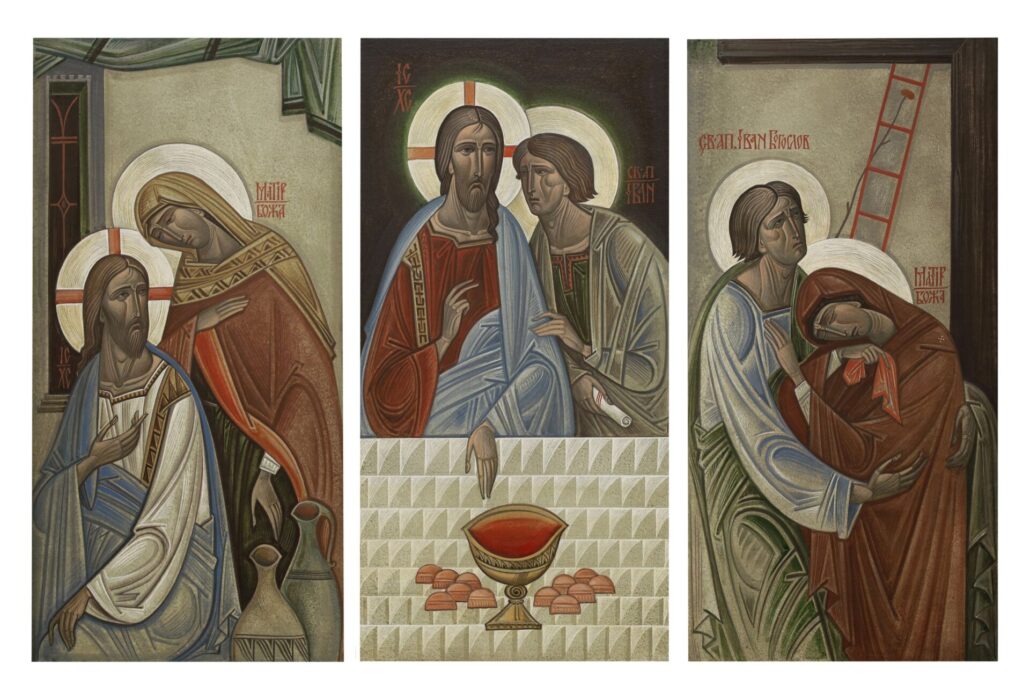Until 27 March, the Museum of the Archdiocese of Warsaw is hosting an exhibition of around 50 icons created during the International Iconography Workshop in Castel Gandolfo, Italy.
The artists interpreted through icons the scene described in the Gospel of St John: “So when Jesus saw his mother and the disciple whom he loved standing beside her, he said to his mother “Woman, behold your son”. Then he said to the disciple, ‘Behold your mother.’ And from that hour the disciple took her to himself”.
The icons were created during the International Workshop of Iconographers in Castel Gandolfo, near Rome. Forty artists from Poland and Ukraine participated in the event. The exhibition ‘Behold Thy Son, Behold Thy Mother’ has already been shown in Siedlce, Lviv and Nowy Sącz. Immediately after the exhibition in the Museum of the Warsaw Archdiocese, the works will be shown in Berlin.
The exhibition will feature icons with the scene at the foot of the Cross, or the deposition of Jesus’ body in the tomb, as well as other passion scenes. Some of the works refer to the crowning of Mary. There are interesting references to the wedding at Cana, Jesus’ first public miracle.
The curator of the exhibition, Mateusz Sora, president of the Association of Friends of Novica, explains that the theme of this year’s plein-air “Behold your son, behold your mother” has a double dimension. Since we have been organising plein-air events for many years in collaboration with the Department of Sacred Art at the Academy of Fine Arts in Lviv, we are affected by this war. The experience of pain, helplessness, loss is the experience of our colleagues, friends”, says Mateusz Sora.
“The interest in successive workshops and exhibitions confirms that for many people icons are still a way to God, they are an opportunity to meet the sacred, and contemporary art is also religious art. The popularity enjoyed by successive exhibitions seems to confirm the truth that man is a spiritual being and seeks this spirituality, and art is a way to the heart of man”, emphasises the Museum of the Warsaw Archdiocese.
Adrian Andrzejewski





